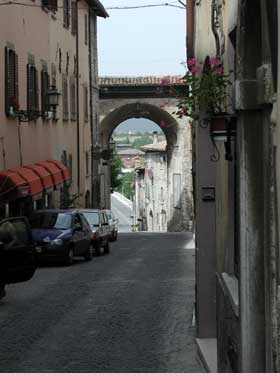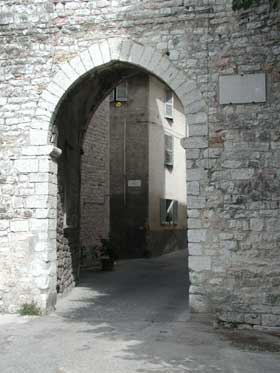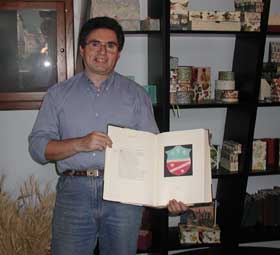
The walls remained intact until the early 15th century when a gradual deconstruction began. The first destruction of the walls was said to have taken place at the hands of the town's own people after they learned a Rimini knight named Valentino planned to attack them. The knight had been paid to destroy and conquer all the towns ruled by the Duke of Urbino, including Cagli. Valentino's orders came from the Vatican which was frequently at odds with the Duke.

Valentino did not completely conquer all of the Duke's land but did succeed in vanquishing Cagli. Further deconstruction of the walls continued up until the 1950s as pieces of the walls were removed before they deteriorated further as well as to make way for more roads in and out of the town. Today, two of the four original arches stand at opposite ends of the town, with pieces of the remaining walls standing beside them.
Back to Cagli Homepage
